Obsidian Meaning Mysterious Volcanic Glass: Secrets of a Crystal Powerhouse
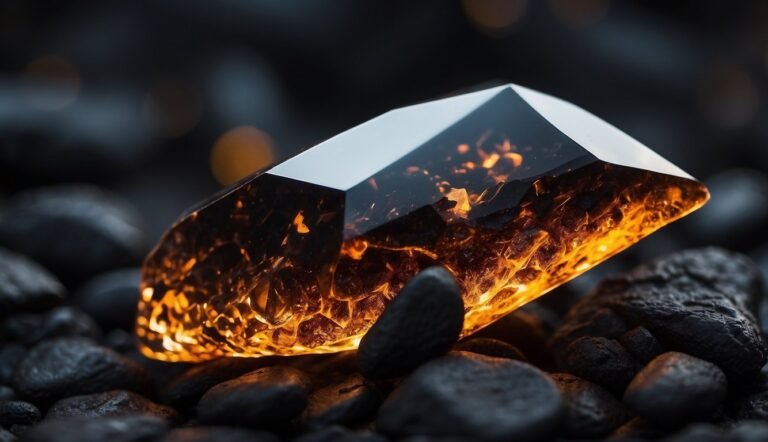
Obsidian, a mysterious volcanic glass, has captured human imagination for ages.
Formed when molten lava cools rapidly and turns into smooth, jet-black rock, this unique stone not only looks fascinating but also carries deep meanings and properties.
Many people believe obsidian helps to ground and protect against negative energy, making it a favorite among crystal enthusiasts.
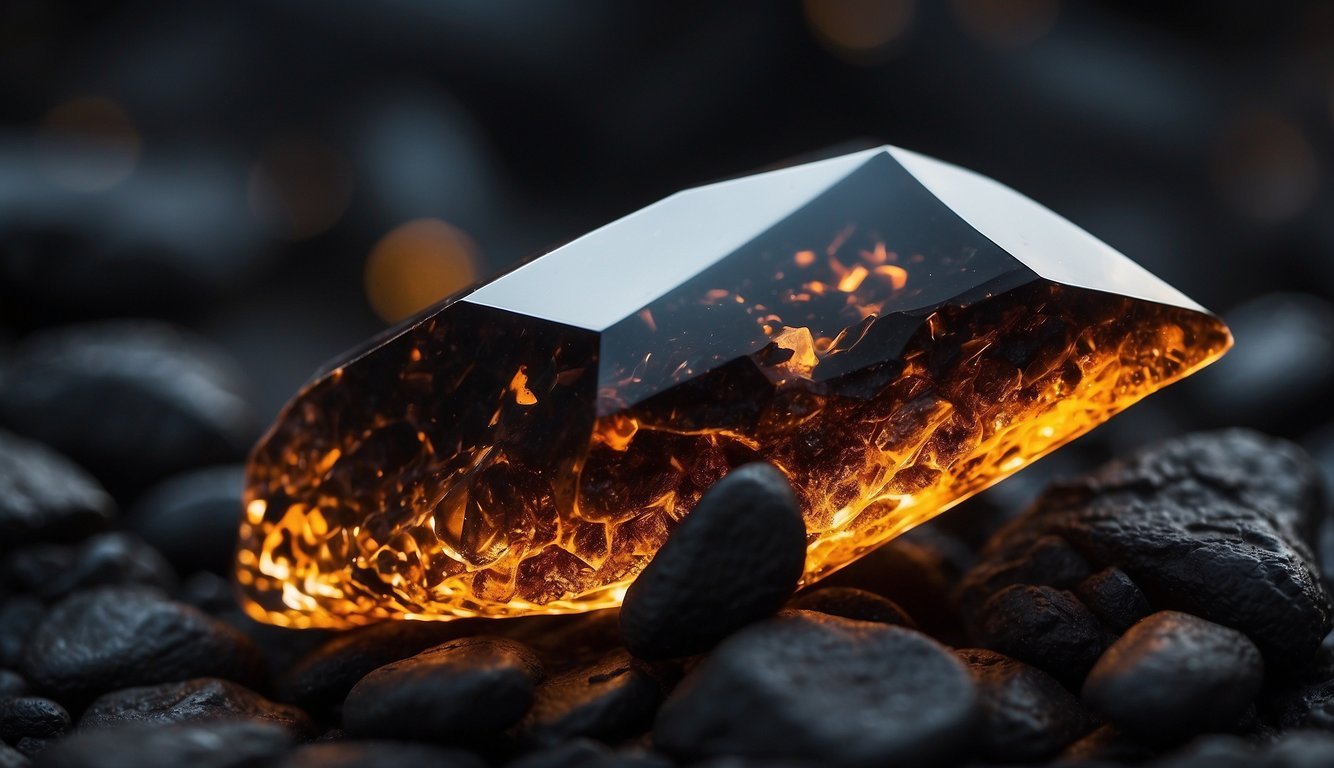
But obsidian isn’t just about its flashy looks.
This amazing igneous rock has a rich history and comes in various colors like red, brown, and even rainbow.
Each type of obsidian offers different benefits, from opening chakras to bringing harmony and luck into your life.
Because of its rapid cooling process, obsidian forms with minimal crystal growth, giving it a distinctive, glassy texture.
Curious to dig deeper into the fascinating world of obsidian and learn how to harness its powers for spiritual protection? Discover more about spiritual power and protection here.
Physical and Optical Properties
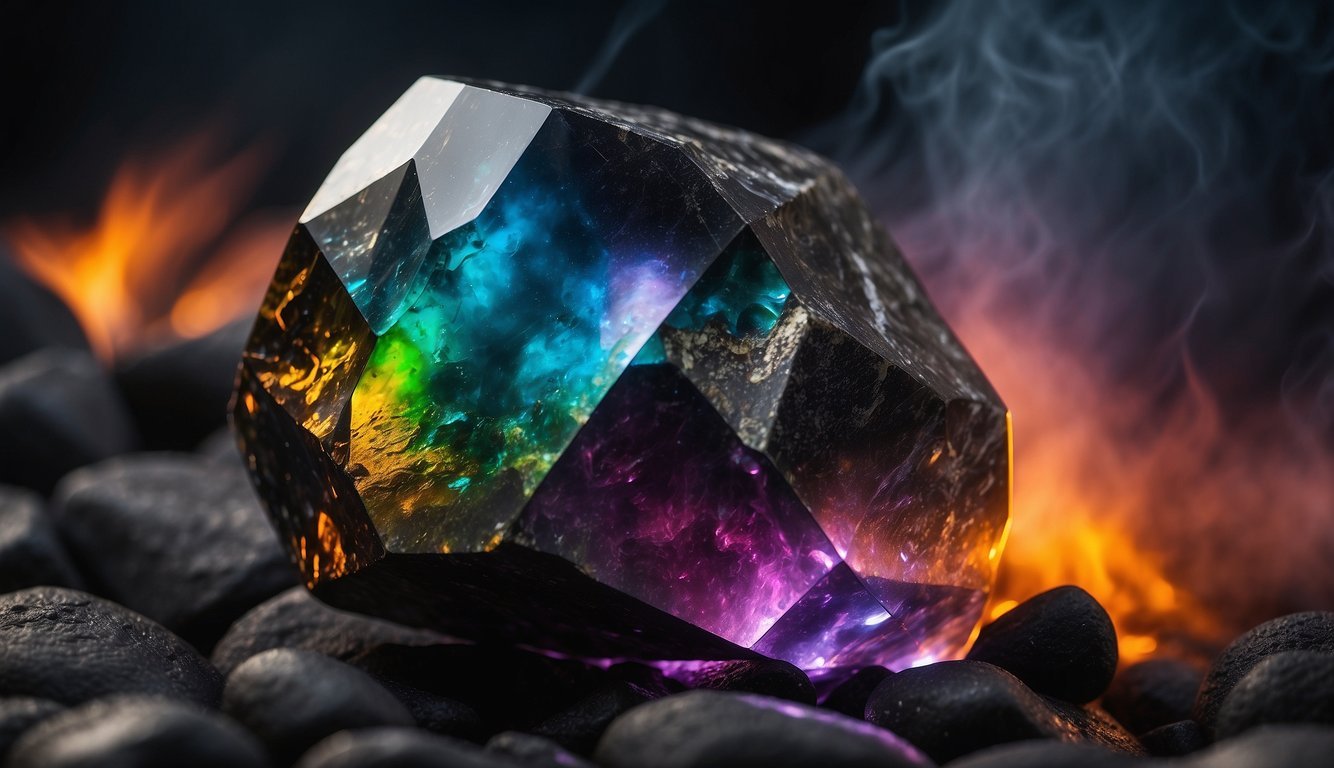
Obsidian, a type of volcanic glass, has unique characteristics like diverse colors and smooth textures.
Here’s a closer look at its color variations, textures, formation, and composition.
Color Variations and Textures
Obsidian typically appears black, but it can also be found in other colors like brown, red, green, and blue. Sheen obsidian can have a golden, rainbow, or silver luster, making it quite striking.
Snowflake obsidian features a pattern of white splotches, resembling snowflakes.
This variation occurs due to the presence of cristobalite crystals embedded in the glass.
Obsidian’s texture is generally smooth and glassy, but inclusions can create different visual effects.
Formation and Composition
Obsidian forms from molten lava that cools rapidly, resulting in minimal crystal growth.
This rapid cooling transforms the lava into natural glass.
Because it cools so quickly, obsidian lacks the crystalline structure of most igneous rocks.
The primary component of obsidian is silica.
The high silica content, typically 70% or more, gives it its glassy texture.
Trace elements like iron oxide can cause the variations in color.
Since obsidian is quite brittle, it can break with sharp edges, which made it useful for ancient tool-making.
Discover how obsidian can enhance your spiritual journey by visiting this link.
Historical and Cultural Significance
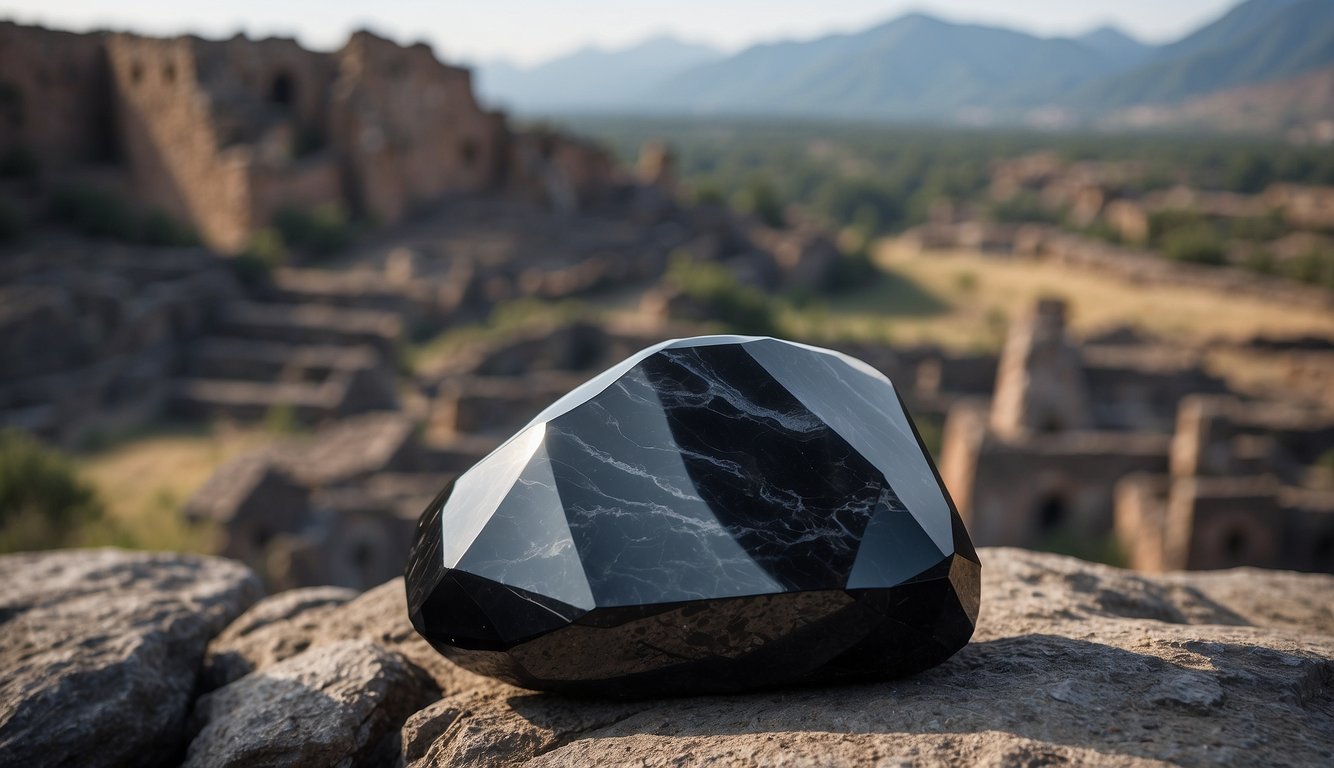
Obsidian has played an important role throughout human history, from ancient tools to spiritual artifacts.
You will find it’s been pivotal in many cultures across the globe.
Ancient Uses and Artifacts
Obsidian was one of the first materials used by humans to make tools and weapons.
Ancient civilizations such as the Aztecs created sharp blades and arrowheads from this volcanic glass.
The Aztecs also made obsidian mirrors, used in rituals to connect with the god Tezcatlipoca, demonstrating obsidian’s spiritual importance.
You can still find obsidian artifacts like knives and arrowheads in archaeological sites today, showcasing its lasting impact on human history.
Global Occurrence and Trade
Obsidian is found in many places around the world, including Mexico, Italy, Greece, Iceland, and Japan.
This widespread availability made it a popular item for trade in ancient times.
Cultures valued obsidian for its sharpness and beauty, leading to a bustling trade network.
These trade routes allowed ancient people to obtain obsidian from distant lands, integrating the material into various aspects of daily life and spiritual practices.
Want to learn how obsidian can enhance your spiritual practices? Click here for more information.
Metaphysical Properties and Healing Uses
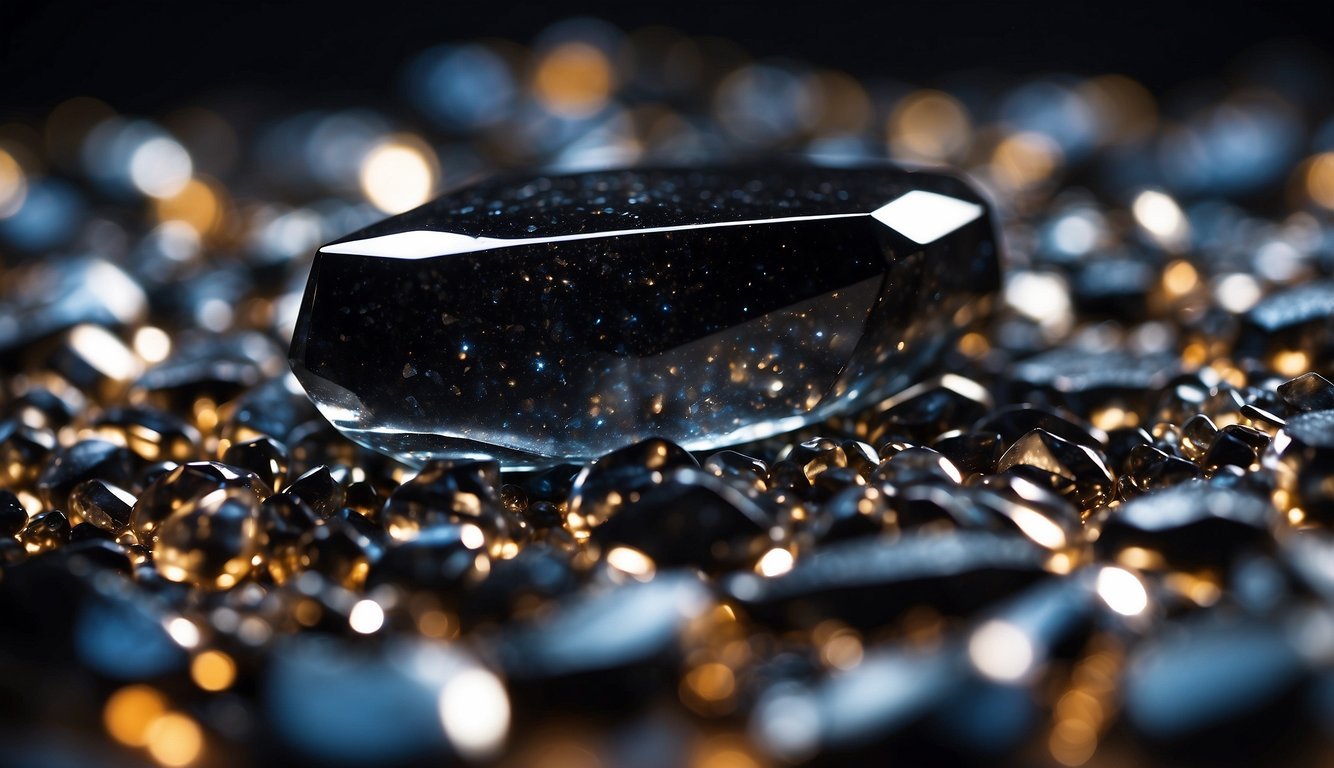
Obsidian’s grounding properties help balance energy and protect against negative influences.
It’s also used in crystal healing practices for stress relief, emotional trauma, and personal growth.
Energetic and Spiritual Qualities
Obsidian is known for its protection and grounding abilities.
This black volcanic glass serves as a shield, blocking negative energies and psychic attacks.
By absorbing negative energy, it helps create a bubble of positive energy around you.
Many people use obsidian in meditation to improve focus and clarity.
Its energy promotes transformation and spiritual healing, making it easier to release emotional trauma and grief.
It particularly resonates with the root chakra, aiding in emotional stability and soul healing.
Contemporary Crystal Healing Practices
In crystal healing, obsidian is popular for stress relief and tension easing.
It’s believed to improve blood circulation and aid muscle relaxation.
You can place it on tired or sore muscles to help with healing and pain relief.
Many healers use obsidian to help people undergoing emotional distress.
It’s said to assist in processing difficult emotions and fostering personal growth.
For those looking to cleanse their aura and remove toxic thoughts, obsidian can be a powerful tool.
Explore more ways to tap into obsidian’s spiritual power and protection here.






